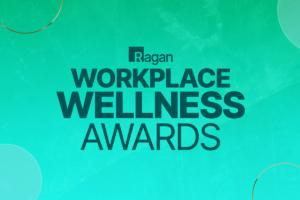Mental Health Awareness Month is a reminder to focus on employees’ mental wellbeing
A roundup of tips and resources to support better mental health for employees.

National Mental Health Awareness Month in the U.S. has been observed each May since 1949. According to the 2023 State of Mental Health in America Report from Mental Health America, 21% of adults are experiencing a mental illness. That’s over 50 million Americans, including over 12.1 million adults who report serious thoughts about suicide.
What’s even more alarming is that 28% of all adults with mental illness reported they were not able to receive the treatment they needed, with most saying they could not afford treatment. This creates a clear window of opportunity for employers to fold mental health support into their benefits and employee assistance programs.
Last year, the Biden administration focused on promoting better mental health and launched the easier-to-remember “988” as the Nation’s new Suicide and Crisis Lifeline to help anyone having a crisis to reach lifesaving help immediately. In this year’s proclamation on the Mental Health Awareness Month, the President stated:
“As Americans, we have a duty of care to reach out to one another and leave no one behind. But so many of our friends, colleagues, and loved ones are battling mental health challenges, made worse by the isolation and trauma of COVID-19. Two in five adults report anxiety and depression, and two in five teens describe experiencing persistent sadness or hopelessness, exacerbated by social media, bullying, and gun violence. Drug overdose deaths are also near record highs, and suicide is the second leading cause of death among young people. It does not have to be this way.”
A culture where people are encouraged to consider and care for their mental health, and the mental health of those around them, must be modeled by example. Here are some tips and resources for employees and employers to help move the needle toward better mental health.
For employees:
- Practice self-care, such as getting enough sleep, eating well and exercising regularly. Even a 30-minute walk every day can boost mood and improve health.
- Take mindfulness breaks throughout the workday to recharge and reduce stress. These can consist of whatever helps ground yourself and recharge — make a cup of tea, stretch, play with a pet, listen to some music, read a chapter of a book, etc.
- Connect with coworkers and build supportive relationships. Have open conversations around mental wellbeing and share your own experiences, good or bad.
- Seek professional mental health support, such as therapy or counseling. Start by looking at what services might be available through an employer benefits program.
- Learn stress-reducing techniques, such as meditation, yoga, guided imagery or breathing exercises, and create opportunities for your employees to learn them, too. This helps better manage reactions to stressful situations and will allow you to communicate more effectively with others.
For employers:
- Create a supportive and inclusive workplace culture that prioritizes mental health and destigmatizes. Encourage employees to speak up about any mental health concerns.
- Address the prevalence of burnout affecting employees. Developing a strong partnership between comms and HR can help define and quantify burnout.
- Provide employees with mental health resources and support, such as counseling, therapy or wellbeing workshops. These can also include scheduled policies like no meetings on Fridays, mandatory mindfulness breaks and more.
- Offer flexible work arrangements that prioritize a work-life balance. That could include a hybrid work model, flexible hours or offering a monthly mental health wellness day, as examples.
- Train managers to recognize and have those uncomfortable conversations about mental health. Leadership can do a lot to provide high levels of psychological safety on teams and in their departments.
- Develop and implement policies and practices that prioritize mental health and wellbeing. If you’re unsure where to start, consider us May 16 for Ragan’s free webinar “Creating a Stigma-Free Mental Health Environment for Employees” where experts will go through the steps, considerations and a case study for positive mental health assurances in the workplace.
Beyond online and in-person therapy, here are some mental health resources for employees and employers to look at:
National Alliance on Mental Illness (NAMI): Mental Health Awareness Month toolkit.
Substance Abuse and Mental Health Services Administration (SAMHSA): Helpline 1-800-662-HELP, or visit FindSupport.gov.
American Psychological Association (APA): Guidance on mental health excellence in the workplace.
Mental Health America (MHA): Mental Health Month Toolkit.
National Institute of Mental Health (NIMH): Caring for your mental health.
The Trevor Project: Crisis intervention and suicide prevention for LGBTQ+ youth.
Anxiety and Depression Association of America (ADAA)
In the end, it’s really about employers, and especially leaders within the organization, to model a culture of openness around mental health and remove any negative stigmas. When employees know they can have these conversations with management and peers and be their authentic selves at work, they tend to be more productive and loyal in the end, as well as get the help they might need — which is what Mental Health Awareness Month is really all about.
Jon Minnick is a conference and awards events producer as well as a workplace wellness writer. He encourages everyone to check in on friends, family and colleagues, even just to let them know you’re there for them.







